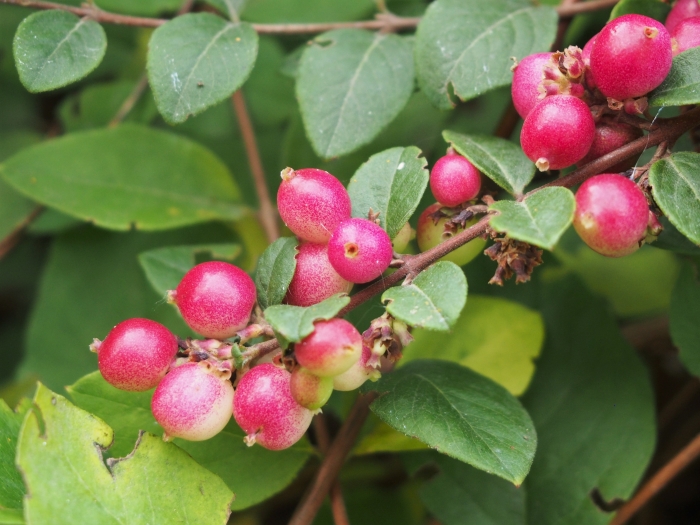Chenault Coralberry
(Symphoricarpos ×chenaultii)
Chenault Coralberry (Symphoricarpos ×chenaultii)
/
/

Agnieszka Kwiecień, Nova
CC BY-SA 4.0
Image By:
Agnieszka Kwiecień, Nova
Recorded By:
Copyright:
CC BY-SA 4.0
Copyright Notice:
Photo by: Agnieszka Kwiecień, Nova | License Type: CC BY-SA 4.0 | License URL: https://creativecommons.org/licenses/by-sa/4.0 | Uploader: Nova | Publisher: Wikimedia Commons | Title: Symphoricarpos_×_chenaultii_'Hancock'_Śnieguliczka_Chenaulta_2019-10-26_04.jpg | Notes: User created page with UploadWizard |


















































Estimated Native Range
Summary
Symphoricarpos ×chenaultii, commonly known as Chenault coralberry, is a deciduous hybrid shrub resulting from a cross between Symphoricarpos microphyllus and Symphoricarpos orbiculatus, first grown in 1912. It is native to open woodlands and thickets across North America, where its parent species thrive. The shrub typically reaches 2 to 5 feet in height and spreads 3 to 6 feet wide, with arching branches that create a dense, rounded form. The leaves are small, oval to rounded, and blue-green in color. Chenault coralberry produces clusters of small, bell-shaped, pink flowers in the summer, which are followed by showy, pinkish-purple berries in the fall that persist into winter, providing visual interest and food for birds.
Chenault coralberry is appreciated for its ornamental berries and its ability to form dense thickets, making it suitable for use as a ground cover, in mass plantings, or as part of a mixed border. It is relatively low-maintenance, tolerating a range of soil types, though it prefers well-drained soils. It can grow in full sun to part shade and requires moderate watering. While it is generally pest and disease resistant, powdery mildew and leaf spot can occasionally affect the plant. Pruning is recommended in late winter to early spring to maintain its shape and promote vigorous growth.CC BY-SA 4.0
Chenault coralberry is appreciated for its ornamental berries and its ability to form dense thickets, making it suitable for use as a ground cover, in mass plantings, or as part of a mixed border. It is relatively low-maintenance, tolerating a range of soil types, though it prefers well-drained soils. It can grow in full sun to part shade and requires moderate watering. While it is generally pest and disease resistant, powdery mildew and leaf spot can occasionally affect the plant. Pruning is recommended in late winter to early spring to maintain its shape and promote vigorous growth.CC BY-SA 4.0
Plant Description
- Plant Type: Shrub
- Height: 1.5-2 feet
- Width: 5-6 feet
- Growth Rate: Moderate
- Flower Color: Pink
- Flowering Season: Summer
- Leaf Retention: Deciduous
Growth Requirements
- Sun: Full Sun, Part Shade
- Water: Medium
- Drainage: Fast, Medium
Common Uses
Border Plant, Groundcover, Low Maintenance, Rabbit Resistant, Street Planting
Natural Habitat
Open woodlands and thickets across North America
Other Names
Common Names: Snowberry ’Hancock’
Scientific Names: Symphoricarpos ×chenaultii , Symphoricarpos microphyllus × orbiculatus , Symphoricarpos xchenaultii
GBIF Accepted Name: